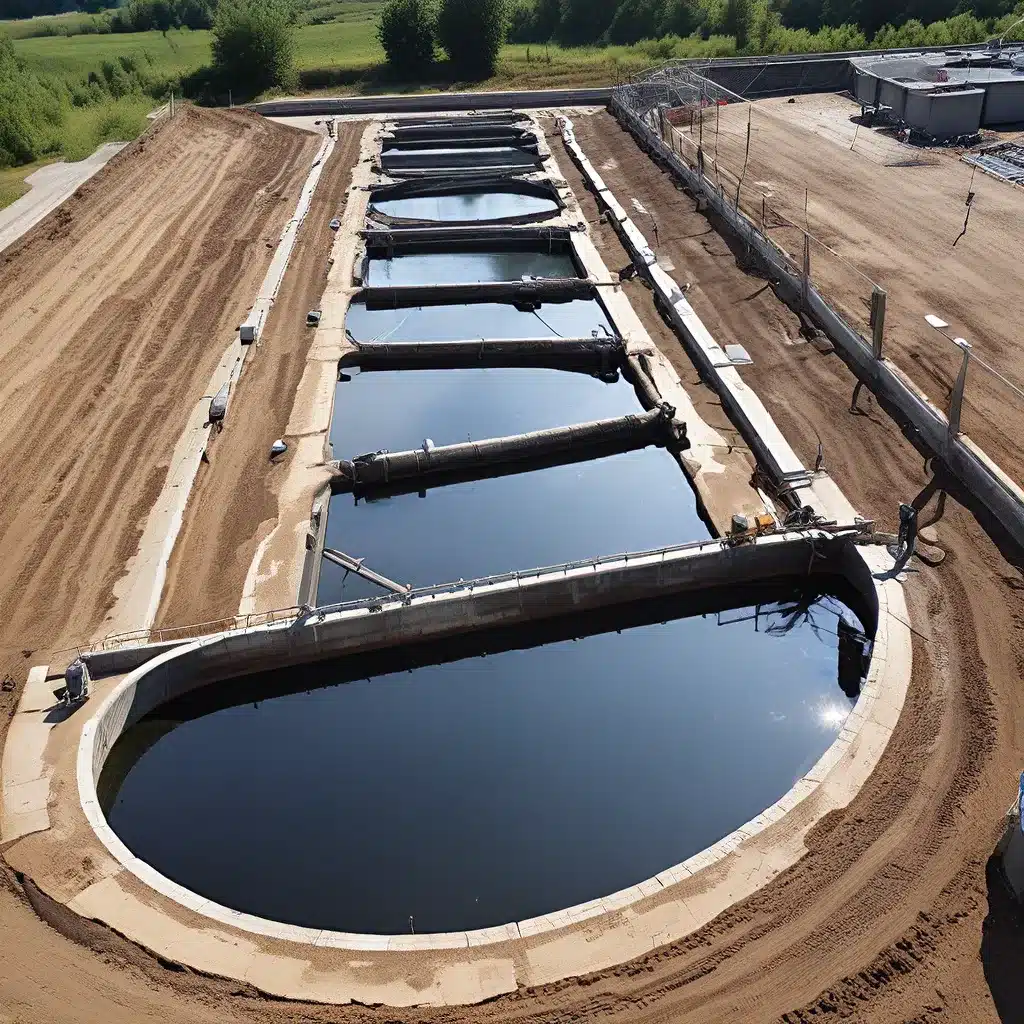
A Flowing Tale of Wastewater’s Transformation
Have you ever thought about where all that water goes after you flush the toilet or run the sink? It’s a fascinating journey, let me tell you. As someone who’s been knee-deep (quite literally) in the world of wastewater treatment, I’ve seen firsthand how cutting-edge innovations are revolutionizing the way we manage this precious resource.
Unraveling the Mysteries of Wastewater
Wastewater, it turns out, is a lot more complex than you might imagine. Picture this: every time we use water in our homes, businesses, or industries, it picks up a whole host of contaminants – from chemicals and heavy metals to microorganisms and nutrients. And when all this gunk-filled water is flushed down the drain, it becomes wastewater, requiring some serious TLC before it can be safely returned to the environment.
Treating wastewater is no easy feat, but fortunately, a team of brilliant minds at places like Texas A&M University are leading the charge when it comes to developing innovative solutions. These researchers are like wastewater whisperers, taming the unpredictable nature of this resource and finding ways to transform it into something truly remarkable.
Harnessing the Power of Modular Systems
One of the most exciting innovations in wastewater treatment is the use of modular systems. Picture a set of Lego bricks, each one designed to tackle a specific type of contaminant. That’s kind of how these modular systems work – they can be customized to address the unique characteristics of wastewater from different sources, whether it’s a natural gas well or a municipal wastewater treatment plant.
As Dr. Joseph Sang-II Kwon, assistant professor at Texas A&M, explains, “The modular nature of the proposed systems will take care of well-to-well variability such as geological conditions, regional regulations, proximity, and capacity of treatment facilities.” In other words, these smart systems can adapt to the specific needs of each wastewater source, ensuring that the treatment process is as efficient and effective as possible.
Pushing the Boundaries of Conventional Approaches
But it’s not just about modular systems – the researchers are also exploring a wide range of innovative technologies to tackle wastewater challenges. They’re experimenting with everything from membrane distillation and counter-flow reverse osmosis systems to novel ionic liquids and electromagnetic fields.
Imagine a future where wastewater is not just a problem to be solved, but a valuable resource to be harnessed. That’s exactly what these researchers are working towards. By developing cutting-edge technologies that can reduce the amount of water needed in processes like natural gas extraction, they’re not only conserving precious natural resources but also minimizing the environmental impact of these industries.
Sustainability at the Forefront
And it’s not just about the technological innovations – the researchers are also putting a strong emphasis on sustainability. As Dr. Debalina Sengupta, associate director of the Gas and Fuels Research Center at Texas A&M, explains, “When technologies are considered, we seldom are able to take account of all the sustainability aspects that make it truly feasible. The DIAMOND project will consider the true sustainability of the technology options and will provide the platform for predicting and testing future options.”
In other words, these researchers aren’t just looking at the immediate benefits of their technologies – they’re also considering the long-term environmental impact, ensuring that the solutions they develop are truly sustainable and eco-friendly.
A Future of Wastewater Wizardry
As I delve deeper into the world of wastewater treatment innovations, I can’t help but feel a sense of excitement and anticipation. The possibilities are endless, and the potential impact on our environment is truly remarkable.
Imagine a world where wastewater is no longer a burden, but a valuable resource that we can harness to power our homes, grow our food, and sustain our industries. It’s a future that’s closer than you might think, thanks to the tireless efforts of researchers and innovators who are dedicated to enhancing environmental stewardship.
So, the next time you flush the toilet or turn on the tap, take a moment to appreciate the incredible journey that your wastewater is about to embark on. Who knows – it might just end up powering your home or irrigating your garden, all thanks to the wizardry of wastewater treatment innovations.


